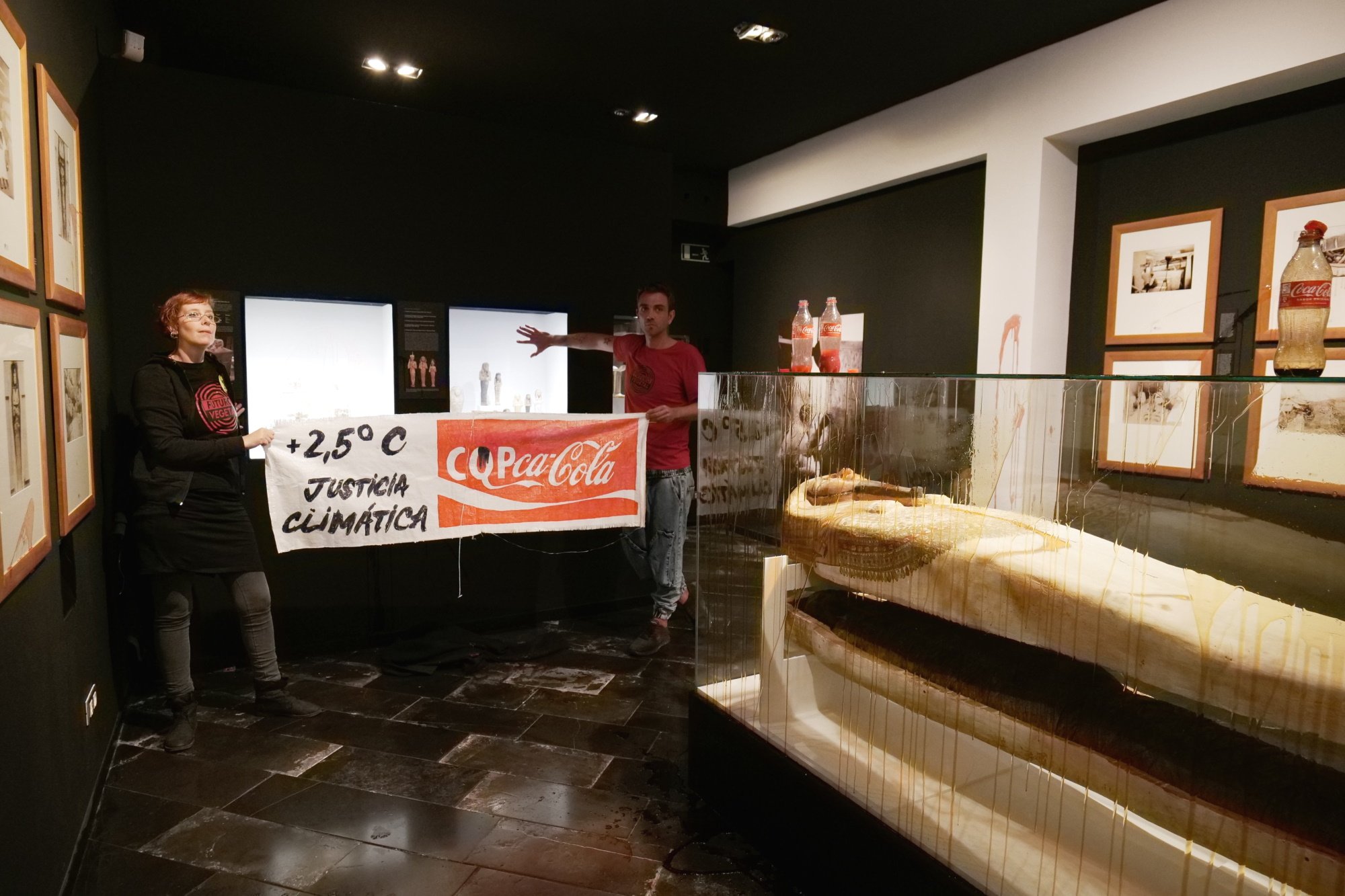A controversial protest action. Four activists from the Futuro Vegetal collective are being investigated for causing damages and crimes against historical and cultural heritage after the climate emergency protest they staged at the Egyptian Museum in Barcelona last November. The management of the Museum filed the complaint and, initially, assessed the damages at around 25,000 euros. The Barcelona urban planning and environmental prosecutor is also involved in the case. Two photographers who were "invited" to record the surprise action were required to identify themselves at the protest by the Mossos d'Esquadra police and in one of the court documents were listed as being under investigation. In the end, the head of Barcelona investigating court 18, judge Carmen Garcia, clarified that the journalists are called as witnesses and are not accused.
The protest action at the Egyptian Museum in Barcelona's Carrer Valencia took place on Sunday, November 13th last year. Two activists entered to observe while two others poured a liquid that simulated oil over the display case of a replica of a mummified Egyptian pharaoah, and also smeared “fake blood” on some photographs in protected frames. The two activists then taped their hands to a display case and displayed a banner that read "+2.5 degrees, Climate Justice" with a well-known logo that read "COPca Cola", a reference to the COP 27 climate change conference being held in Egypt, which was sponsored by the beverage multinational.
In Madrid, all investigated
The action at the Egyptian Museum was the first protest of this kind in Barcelona, after two activists in Madrid had glued themselves to the work Las Majas, by Francisco de Goya, on display at the Prado Museum, on November 5th. The Futuro Vegetal group, responsible for these protest actions, is a group that is part of the Extinction Rebellion collective, an international climate emergency activist group. Climate activists also carried out similar actions last autumn in which artworks were the targets in other European museums, such as Rome and London.
In the Madrid action, the court initially also cited the journalists who had covered the news as persons investigated, which caused controversy because of its implied threat to the right to information. In addition, it was clarified that the frame that protects and decorates Las Majas, which the activists glued themselves to, is not the original one, and therefore not an asset of cultural interest, thus reducing the possible accusation and punishment
Jam damage to a real sarcophagus?
In the Barcelona case, the day after the protest action, Mariàngela Taulé, director general of the board of trustees of the Clos Archaeological Foundation, already announced that the organization would file a judicial complaint and assess the damage. She also clarified that the sarcophagus covering the mummy "is authentic and not a replica", as the activists had claimed. One of the expert reports provided to the court in the Barcelona case states that the protestors threw jam at the display case and that it could have entered the interior and affected the sarcophagus. It is also stated that they sprayed sticky liquid on images (also protected) taken by archaeologist Harry Burton of the excavations of Tutankhamun's tomb.
The final expert report on the damage caused by the action, and whether it affected protected items, is yet to be presented. In Spain, crimes against historical and artistic heritage are punishable by from 6 months to three years in prison, in addition to a fine. The crime of causing damage is also punishable by up to three years in prison. The Barcelona judge has summoned the four activists to testify as persons investigated for the two crimes on May 24th.

